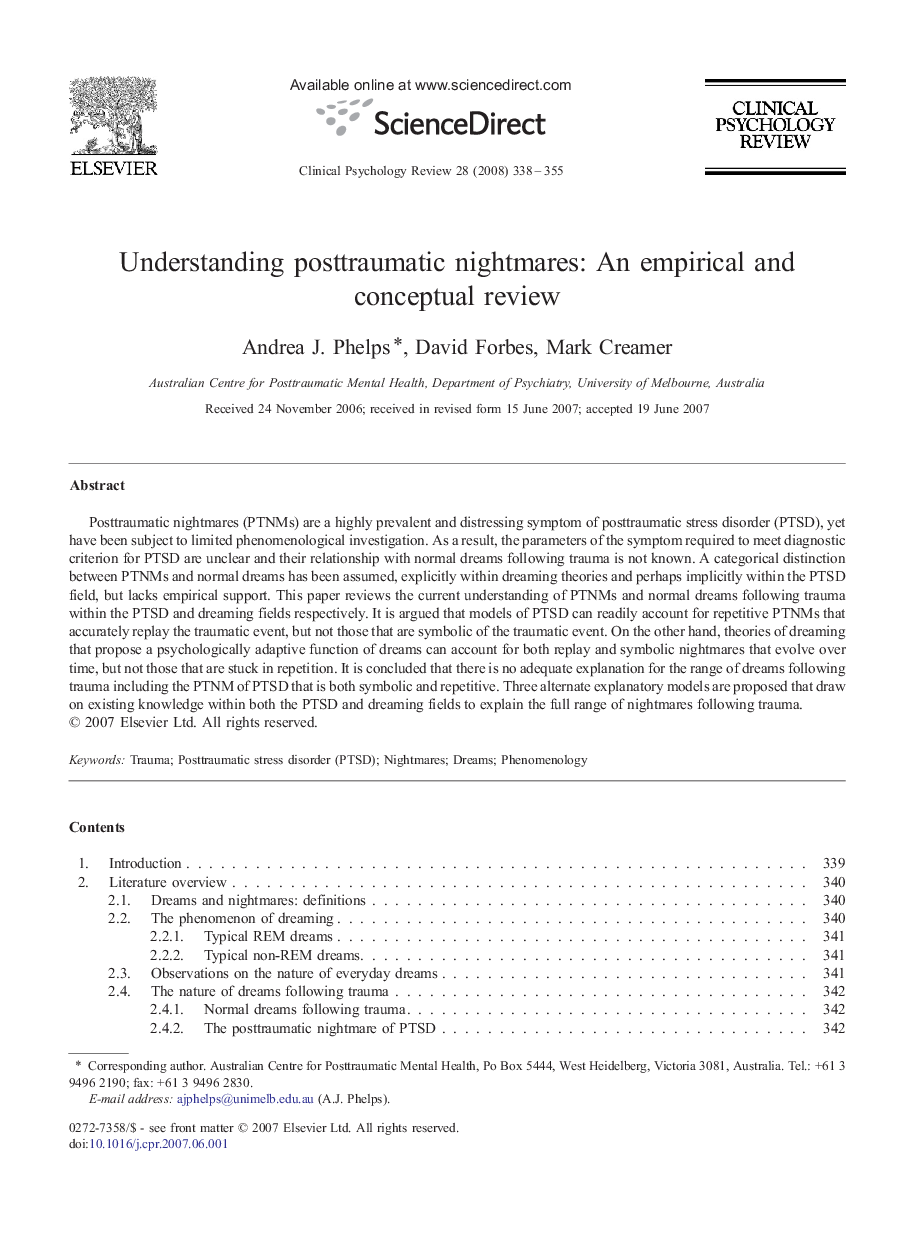| Article ID | Journal | Published Year | Pages | File Type |
|---|---|---|---|---|
| 904005 | Clinical Psychology Review | 2008 | 18 Pages |
Posttraumatic nightmares (PTNMs) are a highly prevalent and distressing symptom of posttraumatic stress disorder (PTSD), yet have been subject to limited phenomenological investigation. As a result, the parameters of the symptom required to meet diagnostic criterion for PTSD are unclear and their relationship with normal dreams following trauma is not known. A categorical distinction between PTNMs and normal dreams has been assumed, explicitly within dreaming theories and perhaps implicitly within the PTSD field, but lacks empirical support. This paper reviews the current understanding of PTNMs and normal dreams following trauma within the PTSD and dreaming fields respectively. It is argued that models of PTSD can readily account for repetitive PTNMs that accurately replay the traumatic event, but not those that are symbolic of the traumatic event. On the other hand, theories of dreaming that propose a psychologically adaptive function of dreams can account for both replay and symbolic nightmares that evolve over time, but not those that are stuck in repetition. It is concluded that there is no adequate explanation for the range of dreams following trauma including the PTNM of PTSD that is both symbolic and repetitive. Three alternate explanatory models are proposed that draw on existing knowledge within both the PTSD and dreaming fields to explain the full range of nightmares following trauma.
